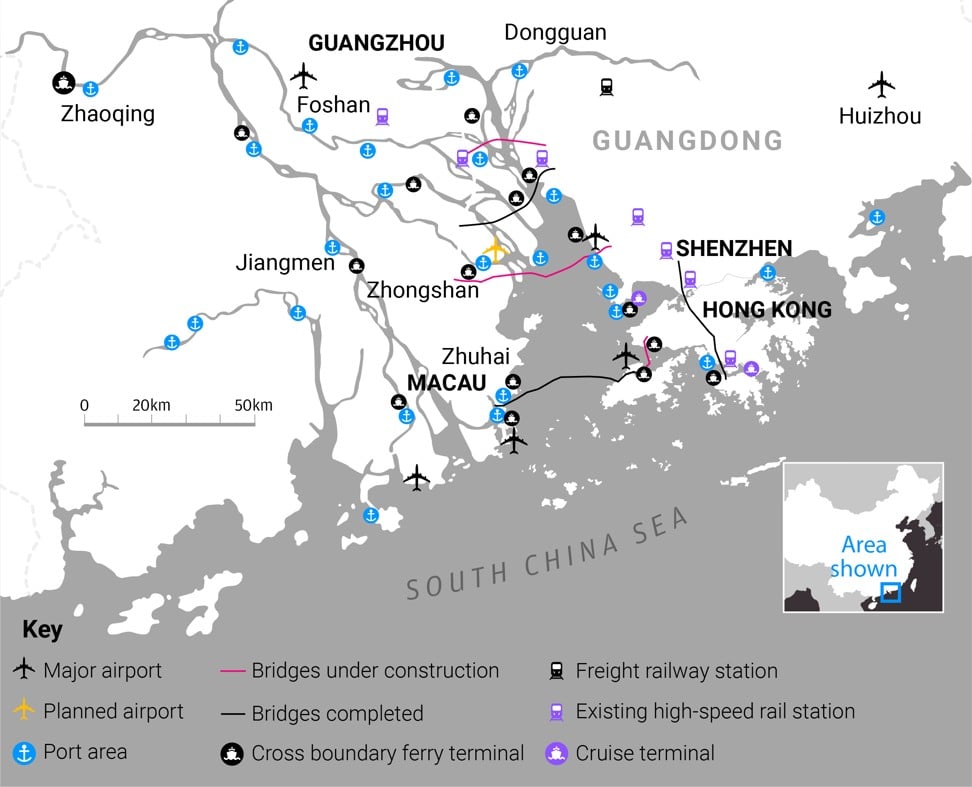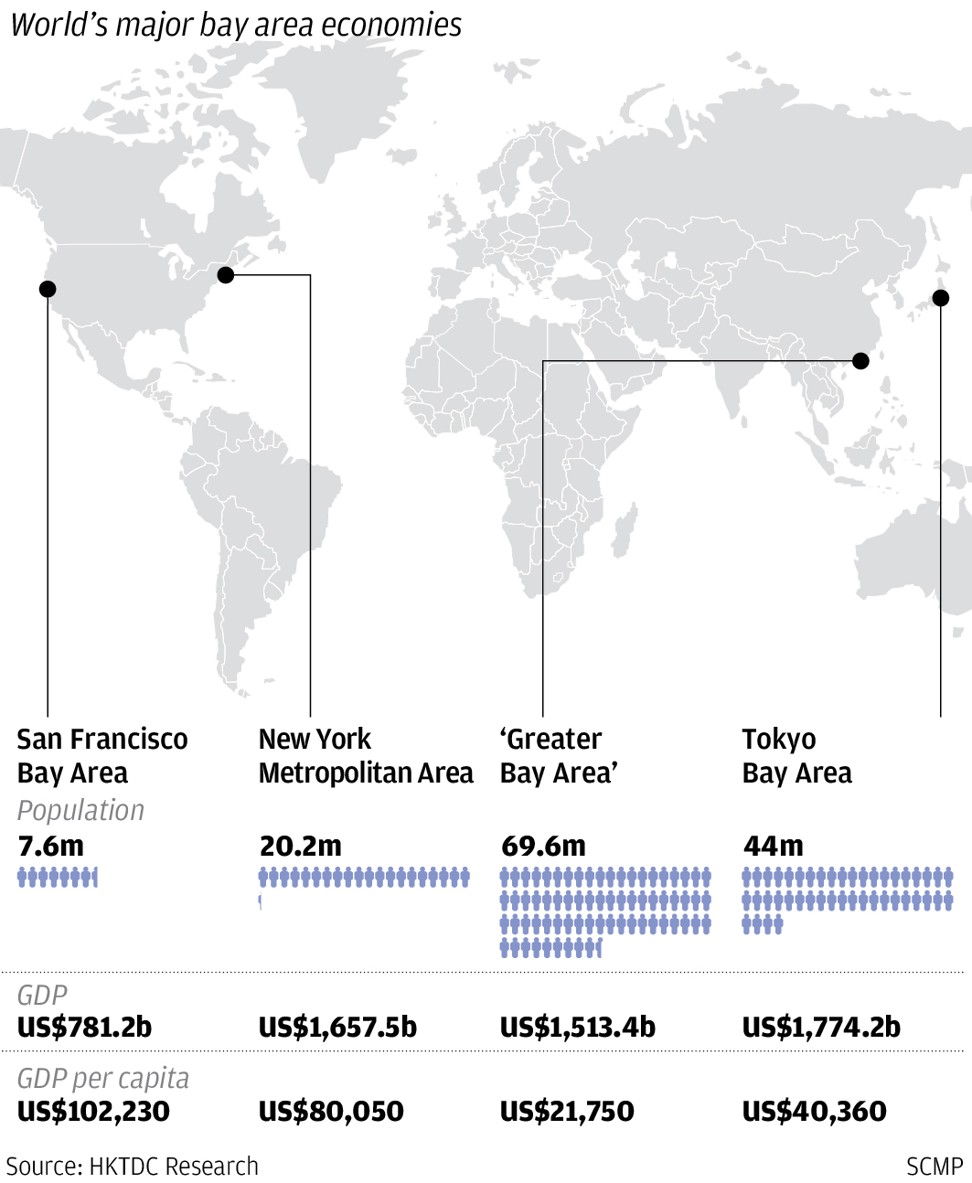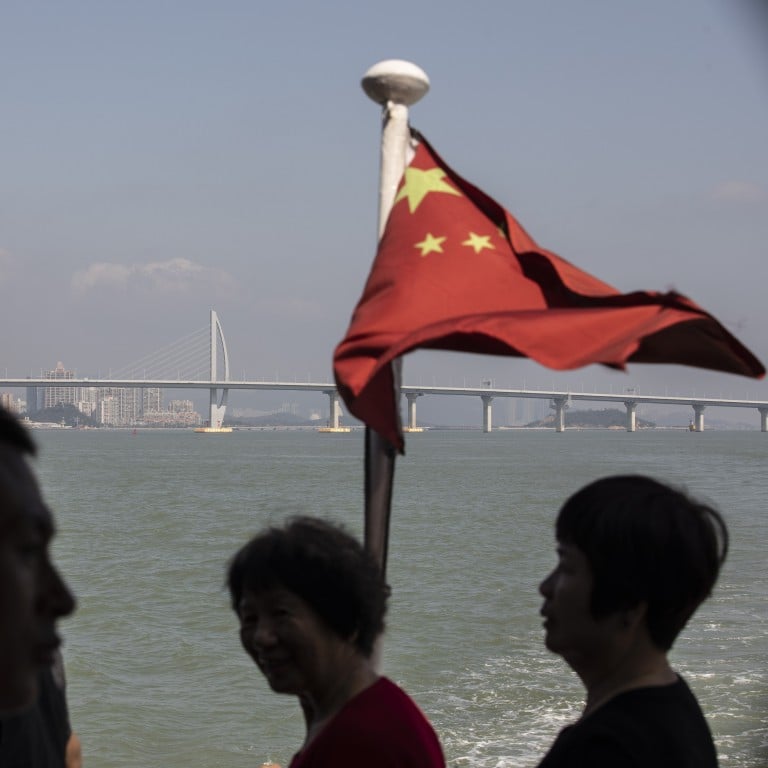
Can China’s Greater Bay Area really rival the likes of Tokyo, New York and San Francisco?
- It covers a geographical area equivalent to the land mass of Croatia and is the largest of the four metropolitan areas
- At US$1.8 trillion in 2017, the GDP of the Greater Tokyo Area is largest among the four regions
About fours years after China’s top economic planners coined the term “Greater Bay Area”, details about the initiative were finally be unveiled on Monday. First mentioned in a 2015 blueprint of Beijing’s Belt and Road Initiative, the term has become a buzzword among business communities in southern China and beyond.
The initiative aims to connect the former European colonies of Hong Kong and Macau with nine cities in China’s southern Guangdong province. Officials from the three jurisdictions signed a framework agreement in 2017, vowing to achieve goals such as greater economic integration and more robust innovation through the initiative.
Beijing has stressed that the region covered by the Greater Bay Area initiative has the potential to grow into one of the most important metropolitan areas in the world, rivalling city clusters formed around San Francisco, New York and Tokyo.
Here is how the Greater Bay Area compares with these three regions:
Greater Bay Area
Comprising nine cities in mainland China and the two special administrative regions of Hong Kong and Macau, it is the largest cluster among the four.
It covers a geographical area of 55,904 square kilometres, according to the Hong Kong Trade Development Council (HKTDC), equivalent to the land mass of Croatia and 51 times that of Hong Kong.
The region’s population stood at about 70 million in 2017, slightly larger than that of the UK or France. The area’s gross domestic product (GDP) touched US$1.5 trillion the same year, according to the HKTDC. Smaller than that of the greater Tokyo and New York areas, the figure was still larger than that of Australia, which ranked 13th among all countries in 2017.

With a real GDP growth rate of 7 per cent in 2017, it enjoyed the fastest expansion among all four regions. Its GDP per capita, which is usually seen as an indicator of the standard of living, at US$21,750 in 2017 was, however, far lower than that of the other three regions.
It is home to some of the world’s busiest ports – Shenzhen, Hong Kong and Guangzhou were ranked as the third, fifth and seventh largest container ports in the world in 2017, respectively, by shipping journal Lloyd’s List.
Located on the Pearl River Delta, the region is a commerce and agriculture hotspot dating back to at least the Song dynasty (960-1279). Since China’s opening up in the late 1980s, mainland cities within the region have charged ahead economically, and fostered close economic and cultural ties with Hong Kong and Macau.
The region, once dubbed “the world’s factory” for its strong manufacturing sector, is increasingly known for the technology giants it is home to. Some of the most famous ones include gaming and social media giant Tencent Holdings and telecommunications equipment and device maker Huawei Technologies.
The Greater Bay Area, however, still has a long way to go. The services sector made up less than 70 per cent of its economy, the lowest among the four city clusters, according to various estimates.
Greater Tokyo Area
Different definitions exist as to what the Greater Tokyo Area is. According to one popular theory, Tokyo and three of its neighbouring prefectures make up the area, which is also known as the Tokyo Metropolis Region.
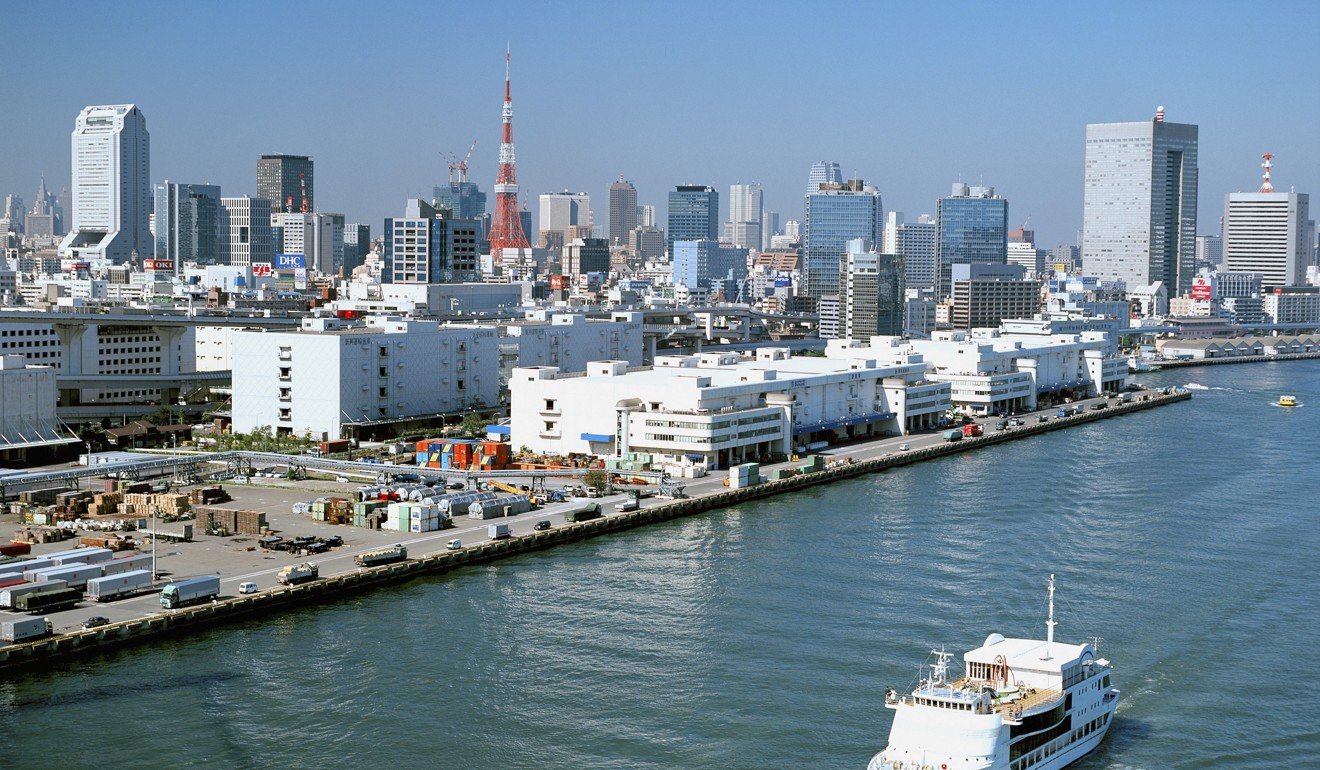
This region was home to 38 million people in 2016, or about a third of Japan’s population, according to the United Nations. It spans 13,600 square kilometres, or about 4 per cent of the country’s land area.
Its GDP was estimated to have touched US$1.8 trillion in 2017, the largest among the four regions. In fact, it was the world’s largest metropolitan area economically, according to 2014 data from the Organisation for Economic Co-Operation and Development (OECD). The area’s GDP per capita, at US$42, 551 in 2014, according to the OECD, puts it behind New York and San Francisco.
The region’s development only began in the late 19th century under Emperor Meiji, who established the city of Tokyo and made it the de facto capital. It endured the devastation of a massive earthquake and the Second World War, before industrial activity accelerated in the region in the 1950s.
The area now boasts a strong advanced manufacturing sector that benefits from the six ports in Tokyo Bay. Its services sector is also robust, accounting for 77 per cent of GDP.
As many as 37 of the world’s largest companies that made it into the 2017 Fortune Global 500 list are headquartered in Tokyo.
San Francisco Bay Area
Located in northern California, this region covers San Francisco and nine bordering counties, and is commonly referred to as the Bay Area. The region is the smallest among the four metropolitan clusters, in terms of land area, population and GDP.
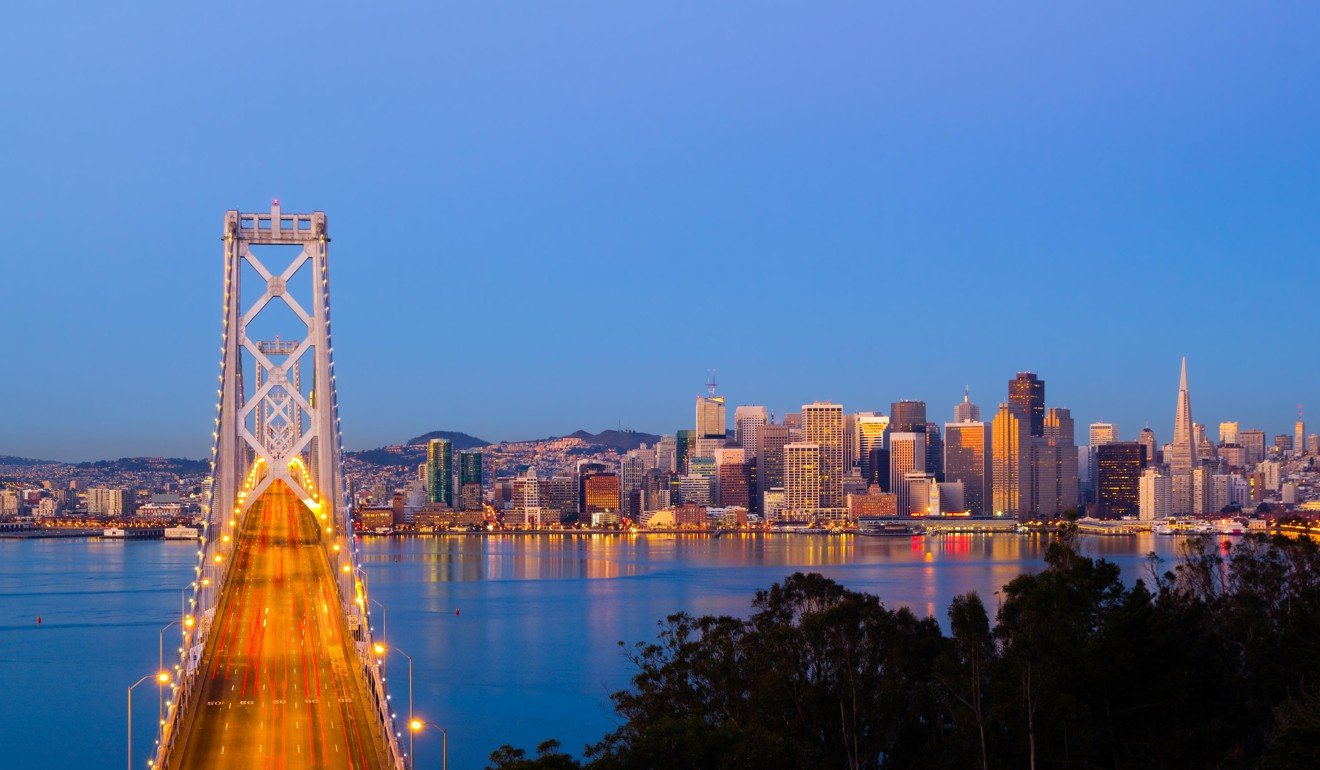
Its population, a mere 7 million people, is similar to that of Hong Kong’s, and its land area is about 18,000 square kilometres. Its GDP was estimated to be US$781 billion in 2016 by the Bay Area Council Economic Institute (BACEI).
But it enjoys the highest GDP per capita, which stood at more than US$100,000 in 2016, thanks to a high concentration of successful technology companies. Its economy grew at 4.3 per cent each year from 2015 to 2017, twice as fast as the overall US economy, according to the BACEI.
Apart from its technology sector, concentrated in the famous Silicon Valley, the Bay Area also has strong financial, shipping and farming industries.
New York Metropolitan Area
The largest urban agglomeration in the US, the greater New York region is made up by New York City and a dozen cities in the states of New York, New Jersey and Connecticut.
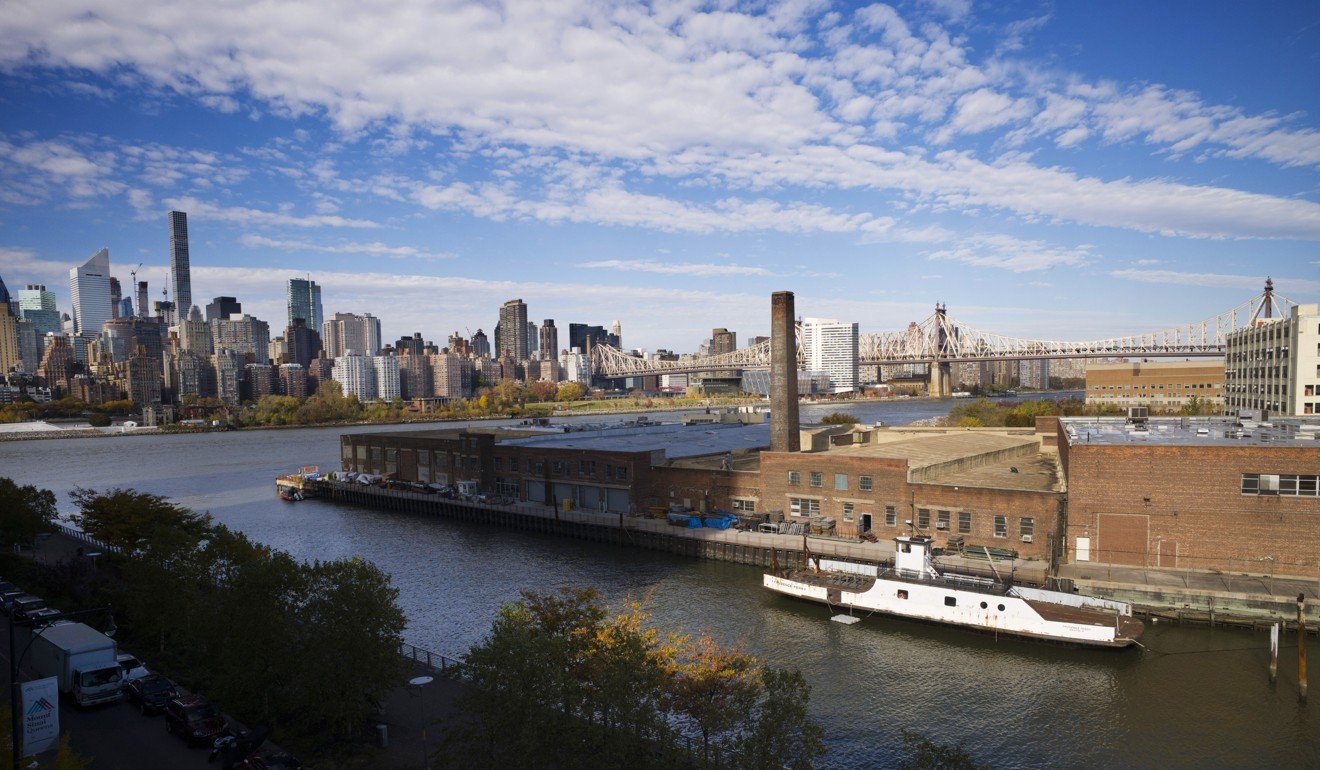
It has a population of more than 20 million, with a land area of 21,479 square kilometres. Its GDP stood at US$1.7 trillion in 2017, the largest among all US metropolitan areas, according to data from the US Department of Commerce. Its GDP per capita was US$71,084 the same year.
Following the first Dutch settlements in early 17th century, the region has become a major trading hub with a crucial political role.
It is one of the world’s most important financial centres, and finance and insurance are a pillar of its economy, contributing 17 per cent of its GDP. Other economic pillars include real estate, international trade, tourism and entertainment.


